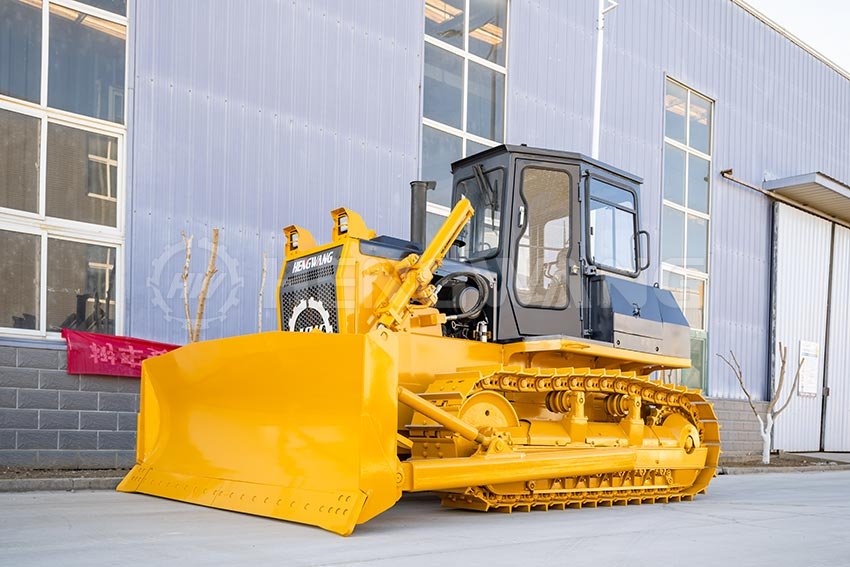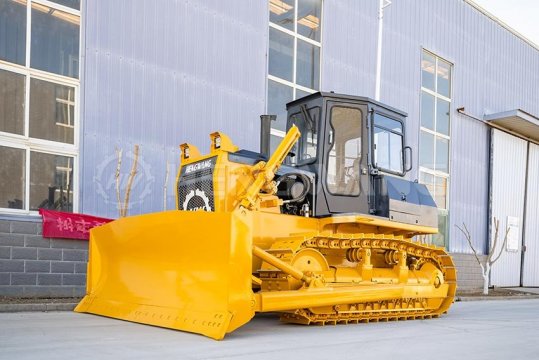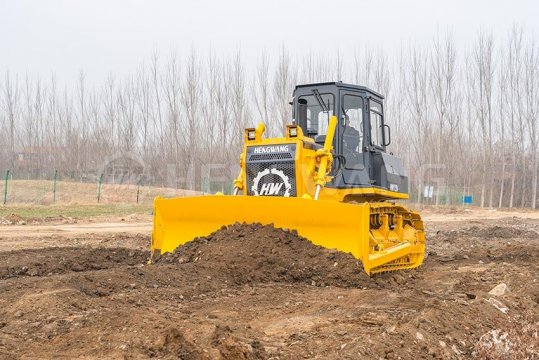In forestry scenarios such as woodland clearing, timber transportation, and firebreak construction, bulldozer attachments for forestry work are key configurations that enhance equipment versatility and operational efficiency. Compared to the single-function mode of general bulldozers, equipment equipped with professional bulldozer attachments for forestry work can easily handle complex tasks like logging, wood collection, and site trimming, increasing operational efficiency by over 40%. This article analyzes the core types, application scenarios, and selection logic of bulldozer attachments for forestry work to help you match suitable equipment.
1. Common Types of Bulldozer Attachments for Forestry Work and Their Core
Functions Bulldozer attachments for forestry work are designed based on operational needs, with four essential types as follows:
(1) Logging Blade: One of the most basic bulldozer attachments for forestry work. The blade is widened to 3-4 meters, with wear-resistant teeth added to the edge, enabling quick felling of miscellaneous trees and clearing of shrubs. Its tilting function also helps pile up felled trees, reducing manual assistance.
(2) Log Grapple: A frequently used bulldozer attachment for forestry work. The hydraulically driven multi-claw structure can stably grip tree trunks with diameters of 30-80cm. Its 360° rotation function adapts to scenarios like timber loading and stacking, with a single-claw clamping force of ≥5T to prevent timber slipping.
(3) Ripper: A deep-operation bulldozer attachment for forestry work. The single-tooth or three-tooth design can penetrate 50-80cm underground, breaking hard soil layers or root-bound areas in woodlands, laying the foundation for subsequent afforestation or road construction.
(4) Protective Net Cover: A safety-focused bulldozer attachment for forestry work. Covering the cab and engine compartment, it prevents flying branches and gravel from damaging equipment during logging operations and blocks fallen leaves from entering the cooling system, reducing failure risks.
2. Selection Strategies for Bulldozer Attachments for Forestry Work in Different
Forestry Scenarios The selection of bulldozer attachments for forestry work must align with "scenario needs" to avoid functional waste:
(1) Woodland Clearing Operations: Prioritize the combination of logging blade + protective net cover as bulldozer attachments for forestry work. The blade quickly clears surface vegetation, while the protective net cover ensures equipment safety, especially suitable for pre of new afforestation areas.
(2) Timber Collection and Transportation: The log grapple is the core bulldozer attachment for forestry work. It is recommended to choose models with buffer functions that automatically adjust clamping force when gripping trunks, avoiding damage to timber quality. It adapts to log transportation and yard sorting.
(3) Firebreak Construction: Combine dozer blade + ripper as bulldozer attachments for forestry work. The blade levels the road to ensure fire truck passage, while the ripper breaks hard soil alongside the road to facilitate the creation of firebreaks, which can be 2-3 meters wide.
(4) Mountain Forestry Operations: Add track widening plates as bulldozer attachments for forestry work to increase ground contact area and reduce ground pressure. Combined with anti-slip chains, they prevent equipment from getting stuck on steep slopes or soft woodlands, enhancing terrain adaptability.
3. Key Performance Indicators of Bulldozer Attachments for Forestry Work
High-quality bulldozer attachments for forestry work must meet the following standards:
(1) Structural Strength: Core components are made of high-strength alloy steel (such as 16Mn), with welded joints undergoing flaw detection. The service life of bulldozer attachments for forestry work should be ≥3000 operating hours to adapt to high-frequency heavy loads.
(2) Hydraulic Compatibility: Hydraulic interfaces of attachments must match the bulldozer’s main unit, with a flow error ≤5% to ensure the response delay of bulldozer attachments for forestry work is ≤0.5 seconds, enabling smooth operation.
(3) Safety Design: Log grapples must be equipped with overload protection devices, and dozer blades should have limit sensors. Bulldozer attachments for forestry work automatically shut down when overloaded to avoid structural damage or safety accidents.
(4) Maintenance Convenience: Key parts have reserved maintenance windows, and wearing parts (such as blade teeth and grapple pads) can be quickly replaced, reducing maintenance costs and downtime of bulldozer attachments for forestry work.
3. Maintenance and Lifespan Extension Tips for Bulldozer Attachments for Forestry Work
Daily Inspection: Clean bark and soil from the attachment surface after each operation, focusing on checking the tightness of hydraulic pipeline joints of bulldozer attachments for forestry work to prevent oil leakage caused by forest moisture.
Lubrication Maintenance: Inject special grease into rotating shafts of log grapples and hinge points of dozer blades every 8 operating hours to prevent jamming of bulldozer attachments for forestry work due to excessive friction.
Wear Repair: When blade edges wear ≥10mm or grapple teeth deform, perform timely surfacing repair or replacement to ensure the operational efficiency of bulldozer attachments for forestry work does not decline.
Hengwang Group Bulldozers: A Reliable Carrier for Professional Bulldozer
Attachments for Forestry Work Hengwang Group’s bulldozer series is specially designed for complex scenarios and is compatible with a full range of bulldozer attachments for forestry work, achieving "one machine with multiple functions." Its logging blades are made of wear-resistant alloy, extending service life by 50% compared to ordinary blades; hydraulic log grapples are equipped with imported seals for leak-free continuous operation, with a gripping accuracy of ±5cm; protective net covers pass impact resistance tests, adapting to safety needs in various woodlands. Hengwang bulldozers undergo rigorous testing for compatibility with bulldozer attachments for forestry work, with precise hydraulic system flow control ensuring quick response of attachments. Backed by the "four-dimensional integration" service system, we provide customization, installation, commissioning, and after-sales maintenance of bulldozer attachments for forestry work, while supporting attachment upgrades for old equipment to continuously adapt to new forestry operation needs.
Take Action Now: Share your forestry operation type (e.g., clearing/wood collection/road building) to get an exclusive selection plan for bulldozer attachments for forestry work. The Hengwang technical team responds within 24 hours! Choosing the right bulldozer attachments for forestry work can transform forestry operations from "single and inefficient" to "versatile and efficient." Hengwang Group bulldozers combined with professional attachments escort every forestry operation.

 How to Choose a Bulldozer for Agriculture: A Key Guide for Adapting to Forestland Operations
How to Choose a Bulldozer for Agriculture: A Key Guide for Adapting to Forestland Operations
 Bulldozer Attachments for Forestry Work: Core Equipment to Unlock High Efficiency in Forestry Operations
Bulldozer Attachments for Forestry Work: Core Equipment to Unlock High Efficiency in Forestry Operations
 Bulldozer Blade Types: Core Configuration for Adapting to Different Operating Scenarios
Bulldozer Blade Types: Core Configuration for Adapting to Different Operating Scenarios